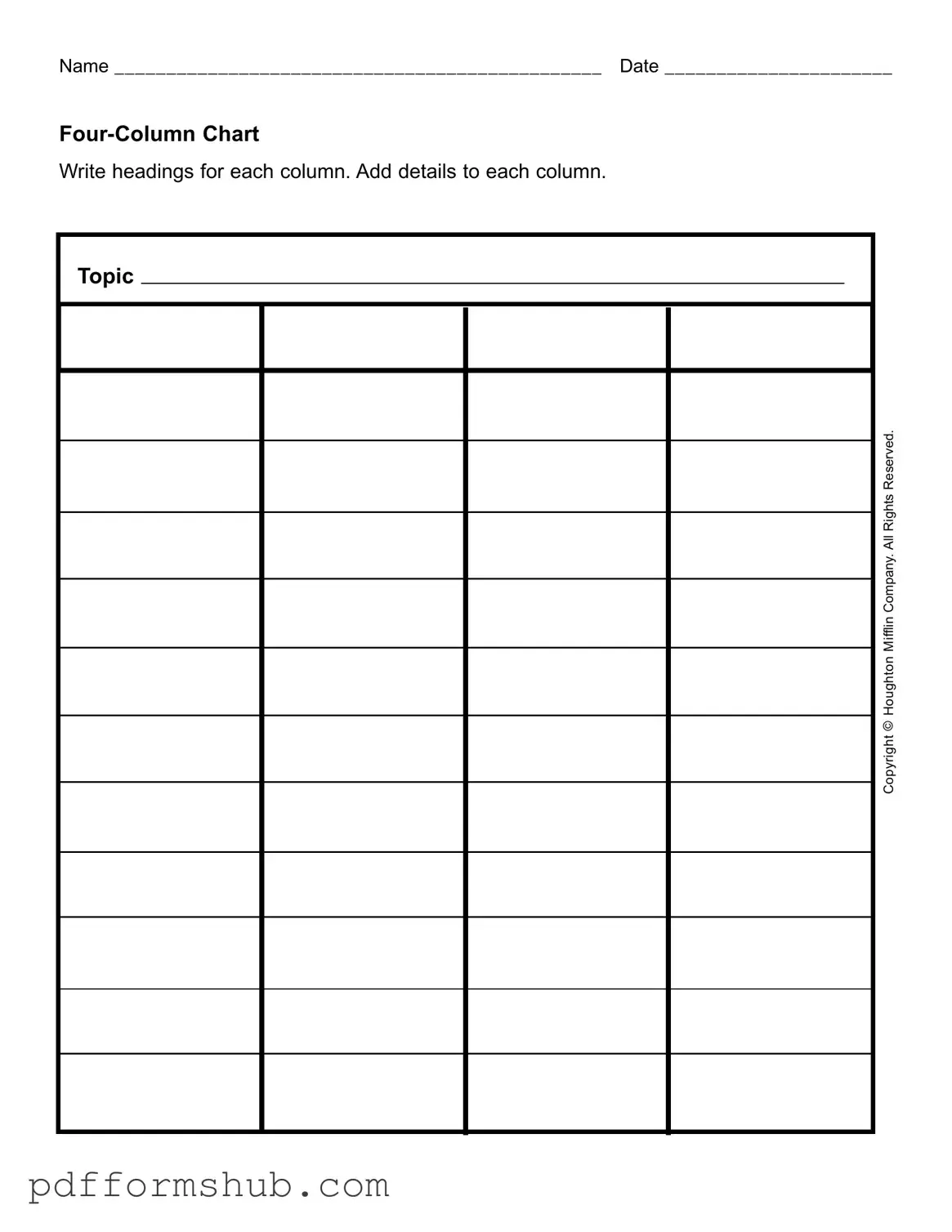The Four Column Chart form serves as a versatile tool for organizing information in a clear and structured manner. Designed to facilitate the breakdown of complex topics, this form encourages users to create headings for each of its four columns, allowing for a comprehensive exploration of various subjects. Each column provides a dedicated space for adding relevant details, making it easier to compare and contrast different elements or ideas. For instance, when analyzing a specific topic, such as the Mifflin Company, users can fill in the columns with pertinent information that highlights key aspects, characteristics, or data points. This method not only enhances understanding but also promotes critical thinking by encouraging individuals to categorize and synthesize their thoughts effectively. As a result, the Four Column Chart form is an invaluable resource for students, professionals, and anyone seeking to present information in an organized and accessible format.
